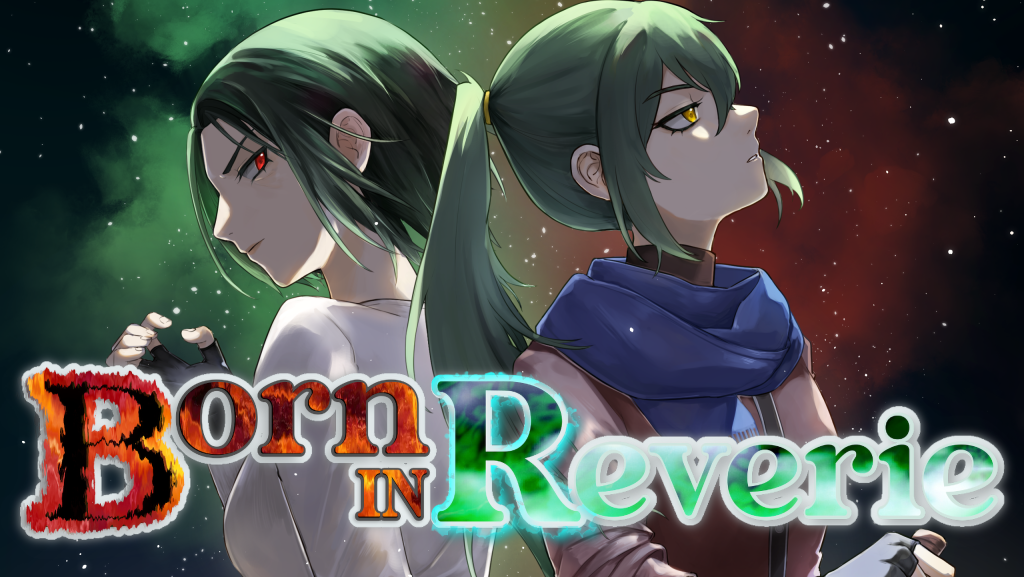Born In Reverie started as a classic JRPG love letter and turned into something a little more personal. In this SDC Spotlight interview, the game’s creator talks about building a turn-based, narrative-driven adventure with deep lore, evolving character arcs, and a critical hit system that doesn’t just add damage, it changes the whole rhythm of battle. The result is a demo that feels familiar in the best ways, but clearly has its own identity.
You’ll also hear the story behind why this project exists at all. What began as a post-college tech career quickly turned into a bigger “what am I doing with my life” moment, and that push led straight into game development. The developer walks through how those feelings shaped Born In Reverie’s themes, tone, and characters, and why making something emotionally memorable became the real goal.
Along the way, we get into the practical side too, from the surprisingly wide toolset behind the project to the day-to-day workflow of solo indie development. They break down key inspirations like Attack on Titan, Nier Automata, and The Legend of Heroes, explain the pixel-sprites-meet-semi-realistic-world look, and share what they’re most excited for players to discover in the full release. If you’re into story-heavy RPGs, or you like hearing how a game goes from late-night idea to real, playable world, this one’s worth your time.
How would you describe Born In Reverie in a single sentence for players who haven’t yet tried the demo?
Born In Reverie is a turn-based, narrative-driven JRPG with a new twist on critical hits in RPG combat, dozens of evolving character storylines, and deep lore.
What was the spark that led you to create Born In Reverie?
I think I did a bit of a speedrun on mid-life crises. I graduated from college with a bachelor’s degree in winter 2019. I initially was going to get a master’s degree in applied mathematics, and I got accepted into a university in California for it, but then the pandemic hit. I decided I’d rather stay local and do a 6-month data analytics bootcamp program rather than take on more debt and leave behind my friends. So I did the bootcamp, where I learned how much I really enjoyed coding and how I was actually pretty decent at it. After the bootcamp and many months of job hunting, in early 2021 I landed a job at a tech startup in my hometown. The people at the company are really great and they’re one of the main reasons I stick around to this day, but it took me less than a year to have the “is this all life’s gonna be from now on?” realization.
You spend over a decade in K-12 education getting told how important having an education and getting a college degree is for your long-term happiness and success. As a child naturally does, I obediently listened to my parents, teachers (and really Western society as a whole) instilling this idea in me, and I got good grades, stayed out of trouble, played some sports, and just did what I was told would make me successful in the world. I felt pretty good about myself getting lots of praise from the adults around me for my academic performance and how smart I was. On the whole, I had good friends, good grades, high self-esteem, and felt like I had it all “figured out,” so to speak. I was gonna get a degree in math, land a technical job making lots of money, and be happy and proud for the rest of my life. The American dream! Sadly, in my opinion, that dream is just that these days, a dream. And like all dreams, you wake up from it eventually and you slowly realize that your decades of education weren’t designed to make you happy, but were simply designed to make you an effective contributor to the economy. Teachings on emotions, purpose, love, or relating to myself in a meaningful way were very scant growing up. It was deeply instilled in me that success and happiness were objects to be won in the “game of life” rather than my birthright. Sadly, I know I’m far from alone in those ideas. In the end, it’s pretty innocent, I think. You get taught how to be a good worker in the economy so you can survive, but certainly not to thrive. So after an exciting few months at my new tech job, feeling so cool and proud for utilizing my math and coding skills to make slick data visualizations and charts and do “badass” data transformations, it quickly dawned on me how routine and pointless this all was.
As a child, being an adult sounded like the promised land. Freedom to spend my money how I wanted to, play video games all day, eat whatever food I wanted to, live by my own rules with nobody telling me what I should do, and so on. And then when I finally “got there,” I realized most of my adult life was actually going to be me mildly underslept, sipping coffee, sitting at a desk alone at home, making pie charts, and making sure I carved out enough time after work to go grocery shopping and lift weights. Oh, and find some time to play games, of course. Hooray, this is what I was made to do. I started getting pretty anxious and lonely as the months went on. For the first time in my life, there was really no purpose anymore. I had done everything my upbringing told me to do and finally landed a well-paying, cushy work-from-home job. So this is it, just working and scrounging for whatever free time I could to distract myself from the emptiness and pain I felt inside.
As the months went on, it finally reached a tipping point one Sunday afternoon. I remember it being late January 2022, and I was at my apartment feeling horribly lonely, anxious, and empty. I think I had a pen and paper and I was trying to write down what things actually mattered to me in life, what I truly cared about. It didn’t take long for me to realize video games were at the core of my life and had been for a very, very long time. Some of my most treasured memories in life were playing The Witcher 3, The Legend of Zelda, Nier Automata, The Legend of Heroes, Dark Souls, Fire Emblem, and hundreds of other amazing experiences. That’s what I actually cared about. I broke down crying and realized that I wanted to give to the world what it already gave me a hundred times over: something truly memorable and emotionally impactful in video game form.

What is your workflow for Born In Reverie, and what tools are you using to help make it?
In no particular order: RPG Maker MV, Excel, Word, Visual Studio, Photoshop, GIMP, JustSketchMe, Gmail, Python, JavaScript, ChatGPT, Fiverr, and my brain. Those are the main tools that have been used to bring Born In Reverie from a concept to a real, tangible game.
To me, one of the beauties of being an indie dev with no publisher or major deadlines is having the ability to work on whatever you’d like to, so my workflow tends to bounce around a fair amount. I always keep the big picture and larger roadmap in mind, but on any given day I tend to wake up and work on whatever appeals to me the most that day. Oftentimes it’s NPC writing. Some days it’s design work in Photoshop. Some days it’s listening to music from other media for inspiration and references to provide the composers. Some days it’s making custom plugins and coding. Some days it’s playtesting. Some days it’s reading over all my documents to remember what the hell the larger story and history actually is in the first place. Some days it’s watching talks from GDC on how to market indie games. Some days it’s writing tweets. Some days it’s updating my website with new content or pages. Some days I justify playing and analyzing other games as “working on my game,” which I do think is a funny justification in my brain. At this point, you probably get the idea!
It’s worth noting that although I describe the process as haphazard, I’m aware that for anyone on the outside looking in, the whole process probably looks very clean and organized. I tend to be a very big-picture thinker and I plan for the future very well, so what I might describe as a scattered workflow could actually be pretty clean and linear to others. I do think it’s important to balance working on what needs to be done and what’s fun to do. In a shocking surprise to nobody, not all aspects of game development are super enjoyable. Some days I know I just need to grind a relatively mundane scene out in the script so that the plot can progress. Other days I know I need to spend time proofreading and ensuring character tones are consistent across scenes. Some days I begrudgingly retool aspects of code or in-game events to be more consistent and scalable for the long haul. For me, Born In Reverie is a mix of “I have to do this today” and “I get to do this today.” The “I get to” items get me out of bed in the morning, and the “I have to” items ensure that Born In Reverie will actually reach completion one day.
My very cleverly named “Game Work” folder contains all assets even remotely related to Born In Reverie’s development. Currently it sits at 69 (nice) GB, slightly over 100k files, and nearly 3.5k folders.
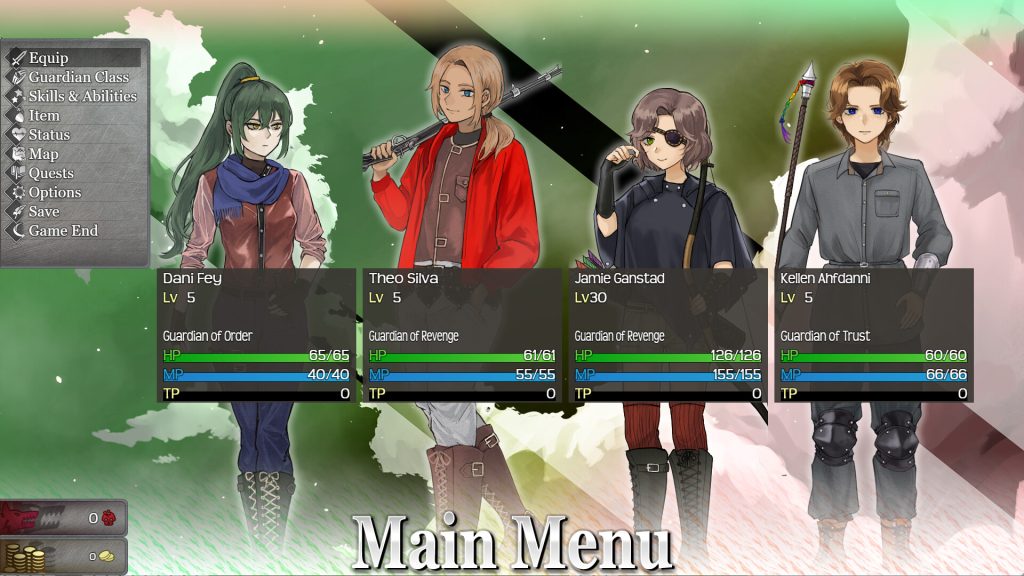
The game mixes lore, character dynamics, and dungeon exploration. Were there particular games, novels, films, or even life experiences that shaped its tone and world?
As you might expect, there are a lot of events and media that influenced the game. Just to touch on a few of the bigger ones, I’ll say Attack on Titan, Nier Automata, and The Legend of Heroes are big influences. I’d like to be careful when mentioning exactly how those titles influence Born In Reverie, so nothing too spoiler-y is revealed. I’ll stick to just naming what I liked about those titles.
I really appreciate how well planned AoT’s story was. You get the sense that the entire story had already been written from end to beginning before the first chapter of the manga was even released. It makes the experience so much more gratifying and awe inspiring to see how everything that happened in this story actually “makes sense” and had multiple reasons for occurring. Hardly anything feels retroactive.
The Legend of Heroes is a more niche JRPG franchise, and it has some of the best world building and lore I’ve experienced. More so than any other franchise I’ve played, those games really capture the feeling of being a visitor to a tangible world. The depth of the NPC characters plays a big part in that. You get the sense that the world exists with or without the protagonists present. I think this is pretty unique compared to most games, where there’s often such a stark contrast between the “main characters” and “everyone else.”
Nier Automata taught me how amazing game soundtracks could be and how emotionally impactful the narratives could be. That game hit me like a freight train.
Much of my own personality and personal struggles are interwoven into the characters themselves, naturally. I do think those aspects are best left to the player to experience as opposed to me spoiling things. But it’s an accurate statement to say that anyone who experiences the game in its entirety will learn a lot about my own philosophies, likes, dislikes, struggles, et cetera.
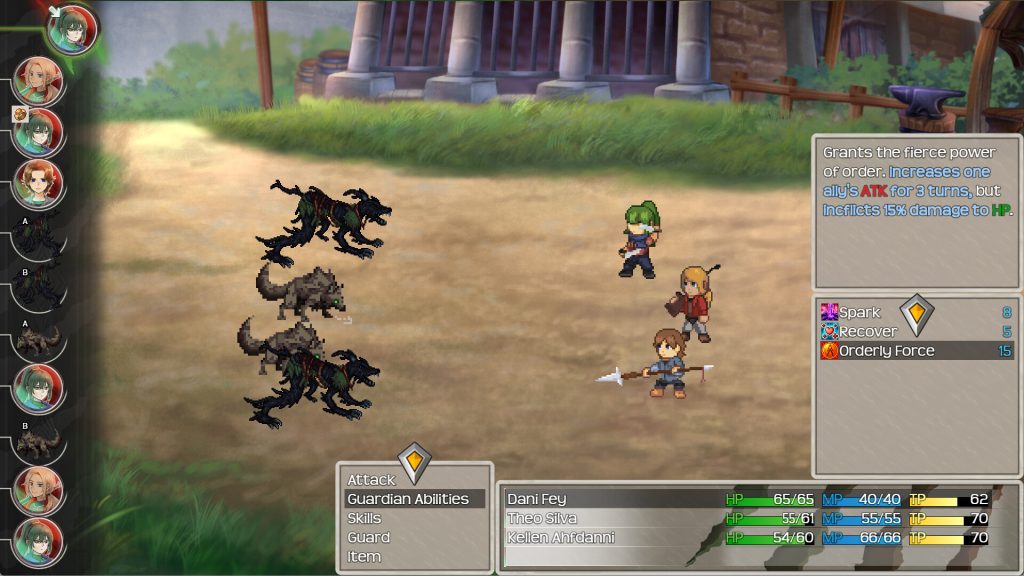
How did you land on that look and feel of the game, and were there styles you experimented with but abandoned?
From the beginning, I liked the idea of juxtaposing pixel art sprites against semi-realistic backgrounds and environments. I believe it helps encapsulate the tone of the game as equal parts lighthearted and fun, mixed with maturity and complexity. There were, of course, revisions to certain character designs and sprites, as well as iteration on saturation levels, vibrance, color depth, et cetera when it came to the backgrounds and environments. But fundamentally I knew what I wanted the game to look like at its core from the beginning, and there haven’t been any major shifts in design or look.
As far as the character designs themselves, I knew I wanted anime and manga inspired illustrations. The artists I work with to produce the character art have done an amazing job so far. Even as an enjoyer of anime and Japanese culture, there’s still the innocent part of me who thinks it’s a bit cringe and cheesy, but that’s part of the fun. There’s nothing wrong with enjoying things that others perceive as cringe.
The “feel” took a while, and still changes. The main challenge is creating a good combat feel. Although Born In Reverie is primarily a narrative-driven experience, I don’t think in this modern era we as developers can reasonably expect players to engage with our stories if we don’t give them sufficient dopamine hits. The game needs to be fun to play, plain and simple. There are so many aspects to consider when it comes to animation length, speed, sound effects, gamepad vibration levels, UI design, the quantity of enemies in each battle, how difficult they should be, et cetera. The word “balance” comes up a lot in games, and I think it’s especially true in the feel of combat. I want it to be challenging but not rage inducing, fast but still deliberate, weighty but not overdone, rewarding without being trite. I’m sure the feel will still evolve over time as I continue playtesting and iterating.
How did you approach balancing personal character arcs with larger stakes?
That’s a really good question and hard to answer. To be honest, I’ve never fully thought about how I balance these. I do fundamentally think they are intertwined, and my natural inclination is to keep larger stakes and character arcs pretty in sync. Both carry emotional weight for the story, and it’s important to have proper build up, but I also don’t want to string the players on for too long. In some respects, the personal character arcs are the larger stakes when I think about the overall story. So these elements are often indistinguishable in my mind.
The demo mentions an “Evolution of Critical Hits” in turn-based combat, where landing criticals triggers the Inspired state. How did you design this system to feel meaningful and engaging?
As far as I recall, the idea for this system struck me randomly one day. It’s sort of a marriage of ideas that I already find appealing in many turn-based games, where the music changes throughout the experience to make it more dynamic and exciting. Modern Fire Emblem games do that with their map themes, and I think it’s super cool and adds a lot of perceived build up and tension to turn-based battles. Bravely Default does something similar where each character has their own theme that can get triggered in battle. So the Inspired system originated from the desire to create more excitement in battles, just like those titles do. From there, I started thinking about how critical hits have largely stayed the same in RPGs for a while. There’s usually some low base chance of landing one, and oftentimes there are abilities and items that increase critical hit rates. I thought it’d be fun to make that a core mechanic, give the player a lot more incentive to increase their critical hit chances, and create an ebb and flow to battles bouncing back and forth between the Steady state and the Inspired state.
In order for it to be meaningful, there has to be clear incentive for the player to use the system. There needs to be perceived value. So when the party lands a critical hit and becomes Inspired, they are immune to most status effects, they deal more damage, act faster, regenerate HP slowly, and gain more EXP when they kill enemies. Gaining more EXP is an interesting incentive, I think. It allows the player to really target which party member they want landing final blows to gain the EXP for a kill. So there’s potential for some “self-inflicted” strategy in each battle, where you may choose to prioritize certain party members getting kills over others to speed up their level ups. And of course, the party is only Inspired for a few turns, so this is the player’s best chance to go on the offensive and deal a lot of damage.
For it to be engaging, I think I rely a lot on the “feel” side of things. I want it to trigger those dopamine hits in players when they land a juicy critical and get to wipe out tons of enemies afterwards. So I continually work on character cut-ins, animations, volume levels, soundtrack elements, gamepad vibrations, and tuning critical hit rates themselves to try and make it always seem enticing to land a critical hit.
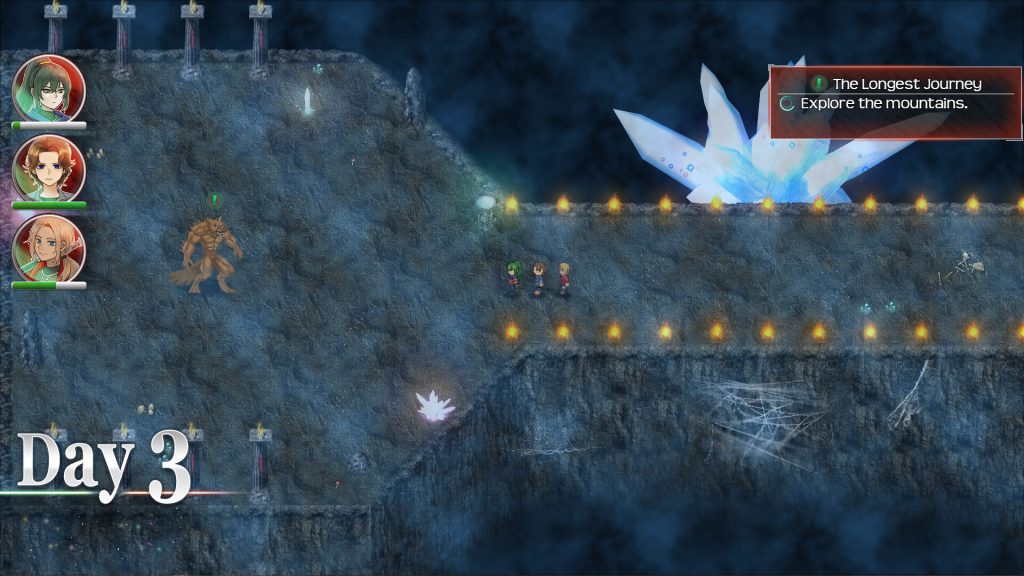
What was the hardest part of balancing systems so the gameplay supports the story?
Luckily this turned out to be pretty easy as the story got locked into place. I think for players who experience the full game, they’ll get a good understanding as to why the gameplay is the way it is from a lore perspective. I guess the hard part can sometimes be where and when to compromise. If I want to introduce X mechanic into the gameplay, I then have to ask if it conflicts with any existing part of the story. If it does, then I have to decide if I want to rewrite parts of the story or introduce new explanations for things. Or on the other side of the coin, I could decide to alter the gameplay mechanic slightly to better mold it into the existing narrative structure. So there can be a push and pull element there. I don’t think I’ve ever had to seriously rewrite parts of the story to fit with the gameplay, however. The story is designed to be an RPG, and the gameplay is designed to support that story at the end of the day.
For players who’ll experience the full game: what are some mechanics you’re particularly excited for them to discover?
From a gameplay perspective, I’m excited for players to mix and match the Guardian Classes for their various skills. I almost hope there ends up being some overpowered strategies that players discover. At least in moderation, I think having some busted combos is really fun, especially when you discover them using your own creativity and intelligence. Unless I enlist a full team of playtesters (which will definitely not be happening at this time), I doubt I’ll be able to test all the possible character builds.
From a story perspective, I’m excited for players to find some of the hidden gems and character narratives. I want players to have lots of “aha!” moments that reward them for paying attention, even if something appeared trivial at the time. I hope to make the narrative very deliberate and satisfying for any fellow gamers who spend a little too much time thinking about dialogue and characters.
When building enemy encounters (especially the “Beasts” you defend against), how did you approach creating variety and maintaining tension throughout?
Creating variety is hard for this project at times. The scope demands a lot of different enemy types and skills to keep things interesting. This is an area I’ve done my best to keep engaging, but also something I’ve compromised on. I love working with artists to produce new sprites based on my ideas, and if $50,000 dropped into my wallet today, I’d definitely spend a lot of it creating a bunch more enemy types and animations. But I’ve had to prioritize what areas need the most attention for the overall vision, so creating super fleshed out and complex enemy encounters doesn’t always take center stage.
None of this is to say that the enemy encounters are stale or boring in my mind. I think they’re quite fun and intriguing. If anything, I think most of the variety in battle comes from the player party’s side of things rather than the enemies. Mixing up Guardian Classes and acquiring new skills provides a good amount of creativity and experimentation that allows gameplay to naturally change over time.
As far as maintaining tension goes, I obviously try to balance the enemy encounters so that it is easier at times, and then very challenging at other times. Tension will naturally arise during stressful combat scenarios, regardless of any story stakes involved. I also think that tension is not always required for the tone of any gaming experience. It’s okay if it deliberately feels easygoing and safe at times. Those moments help contrast the moments where real tension and stakes arise. If everything is tense all the time, then nothing really is. Things only get scary and exciting when you’ve been afforded ample time to breathe in a real (or false) sense of security.
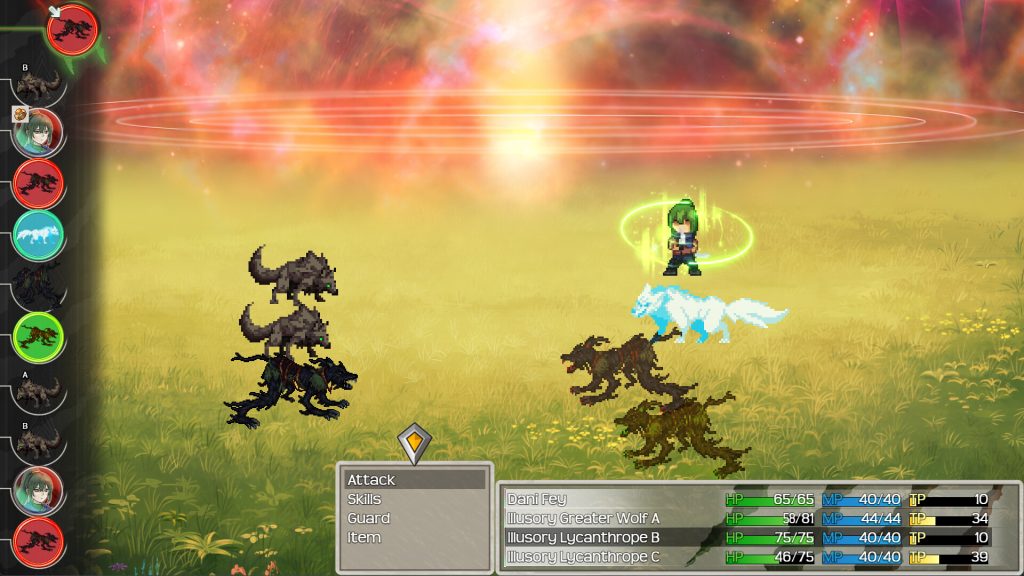
From your perspective, what’s a moment or mechanic that surprised you during development, something that worked out differently (for better or worse) than you expected?
Some days I’m just surprised and amazed the game even works at all. Somehow all the files and code make a whole video game that actually runs and is largely devoid of game breaking bugs. That’s the biggest surprise of all, in general.
Honestly, I can’t think of a concrete example where something really ended up a lot better or worse than expected. There have been small things over the years that caused some issues, but nothing major. Is that strange? I also can’t think of anything that really turned out to be way better than anticipated. Almost everything has been “within reason” or “about as expected,” which is maybe a really lucky thing in game development. I honestly don’t know. I certainly don’t attribute that to my own prowess or intelligence since those were sorely lacking early in development, especially. But regardless, things have largely worked out well for Born In Reverie.
How long has Born In Reverie been in development, and how has your vision for it evolved since you started?
Born In Reverie has been in development since late January 2022. I definitely know that some of the edges have softened since the early days of development. The project spawned equal parts from inspiration and love, and also a deep sense of resentment and dissatisfaction towards modern life. Early story and design ideas carried a lot of that hurt and dissatisfaction with them. Over time, I’ve mellowed certain characters and story ideas a bit as I’ve had the clarity of different perspectives over the years. The original vision and philosophy for the project remains largely intact, however. The core guiding principles remain the same.
I’ve definitely put more effort into the “game-y” aspects of Born In Reverie in recent times. Ensuring tutorials are well placed and simple, changing pacing to make sure nothing drags on for far too long, adding fun item descriptions, playing with different sound effects, and other small touches. I’ve had very passionate ideas for story and characters for a long time, but I didn’t always know what would be interesting or fun to actually keep the player coming back to play. My experience has largely been that even when you think an idea could be super fun and interesting, playtesting is king on that front. The only way to know if a game is fun is to play the whole damn thing and see if anything is actually good, to see if all the systems coalesce into a cohesive experience that is enjoyable. And like I mentioned in an earlier question, especially for narrative heavy experiences, I think a game really needs engaging gameplay to keep players’ monkey brains happy. No judgment, by the way. My brain also enjoys bright colors, flashy action, and pure hype just as much as anyone else. We’re wired to seek pleasure and enjoyment.
As an indie developer, what have been the key lessons from carrying this kind of project forward?
For better and for worse, it’s useful to be a bit obsessed with your project, in my opinion. A fair amount of people have asked me how I stay consistent with the project throughout the years. I work on it in some fashion nearly every day, save vacations and special holidays or occasions. It’s just a habit that has to be formed, and being pretty obsessed with the project for the first year or so definitely instilled some long-lasting habits.
There are plenty of days where I’m not super enthused to work on part of the game, but I just know something needs to get done. I try to balance that with finding fun parts to work on. I think it’s important to work on aspects that are satisfying in the moment, and if nothing feels fun at all, to maybe consider adding something new that does sound fun. It’s your project, after all. We all want our games to be received well by others, of course, but it’s not worth sacrificing your own enjoyment of the process just to do that. I’ve really enjoyed making this project from the beginning, so motivation has luckily never been an issue for me. There are so many aspects to game development that I find it hard to get bored. You can make assets, write story, rebalance gameplay, write code, work on marketing and advertising, or even just sit down for an hour and play your game with no real motive. Just play and see how it feels, see if you enjoy it.
I also think I’m continually learning how much to share and how much to keep to yourself. Like I mentioned earlier, we all hope people like our games and help validate our ideas, but it can be problematic seeking too much external validation and sharing tons of details about your project. There have been a few times where I’ve shared a lot of details about the project and felt relieved but also quite unmotivated afterwards. I’ve heard game developer legend Masahiro Sakurai talk about this concept as well. It always seems to be more motivating and satisfying to work on your game largely in a bubble for a long time before showing new pieces off. It helps keep you immune from too much social pressure and influence. I’m naturally pretty secretive about my project, so this has helped me carry the game forward each day.
What feedback from players or testers has you most excited (or rethinking something)?
Some positive feedback on the Inspired gameplay mechanics has been exciting for sure. It’s always good to hear that an idea is actually pretty fun and interesting from an outside perspective. I’m excited to continue iterating on that and balancing it further.
I’m always a little iffy on the prologue, at least in certain areas. I’ve heard scattered bits of feedback echo my own thoughts on this. It can be a lot of information and story to jump right into, even for players accustomed to that in games. There are pieces to the prologue that definitely feel a bit coarse and rough around the edges, at least in my own eyes. I’ve done a lot of work to retool and improve the prologue over the years, but there are parts that are still sore spots, I think. It’s TBD if I will actually continue retooling it anymore, though. Much of the story depends on events that occur then, and those ideas are pretty locked into place at this point.
What’s your roadmap for the full game moving forward, more classes, deeper lore, post-launch content?
I have the big-picture roadmap in mind. I want this to be a whole complete experience when it’s released properly, so at this time I don’t envision adding DLC or anything brand new after the full release. Nothing’s entirely certain, however. I value games that are released as completed products, but I also am coming around to the benefits of early access titles, depending on the circumstances. I would hate to deliver a half-baked experience to players. I want them to know their time is valued and that they deserve good quality. So I’m thinking of ways to strike a balance on these fronts. Making a big epic RPG is very time consuming, I’ll say that much.
My roadmap involves just completing the game that I have outlined. There will be some more classes, different party members, more story elements resolved, different acts, character arcs completed, lore explained, et cetera. Maybe it’s a simple and redundant answer, but the roadmap is essentially just: “finish the game.”
I don’t have anything locked in, but I hope to have some news in 2026 or 2027 for people looking forward to Born In Reverie.
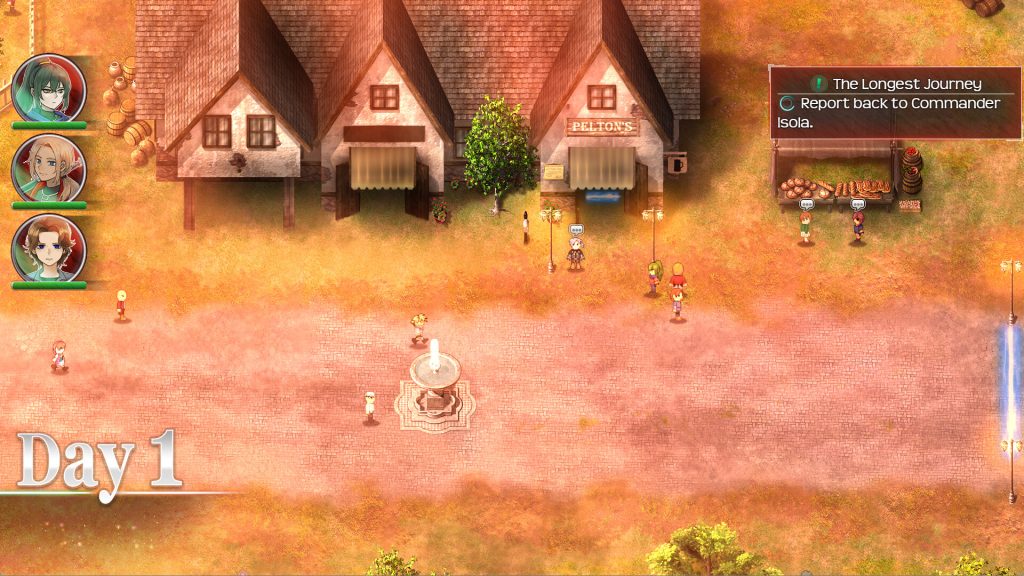
How can players support you, follow your journey, or get involved in shaping Born In Reverie as it grows?
All feedback is immensely appreciated and welcome, although nothing is guaranteed to make it into the game as a result of said feedback, of course. My website is the hub for links to my socials and Steam page. A demo is also available on Steam and Itch.io. I would love to hear people’s thoughts and experiences, and both platforms have dedicated comment and review sections. If you’re an artist and are interested in helping me with the project, I’d love to hear from you via email as well.
Our next question comes from Bugzsteaks, developers of our previous SDC Spotlight game, Bottom-up Beatdown! They asked: How does your level design process go?
My level design process is pretty strict and regimented, perhaps in part because of the RPG genre itself. After some iterating, I landed on a set of rules and guidelines for each dungeon’s design, size, quantity of enemies, chests, items, and estimated length.
I open up a canvas in Photoshop that is the size I decided on (3168 x 3168 px), and then I work on designing discrete “chunks” or “pieces” that I can connect together to create pathways and backdrops. Basically creating some template designs. After I have the templates in place for a new dungeon, I can get to work actually designing each map in the dungeon using the templates.
Once the design work is done and the assets are placed in-game, I go to work placing enemies, chests and items, entrances and exits, et cetera. After that I will do some additional design work in-game with post-processing effects and animations. Then it’s time for playtesting to make sure everything works as intended, and move on to the next map in the dungeon. Rinse and repeat.
What question would you like to ask the next SDC Highlight developer?
What is your favorite part of developing your project, and what aspect do you most dread having to work on?
Born In Reverie feels like the kind of project that grows out of equal parts love for the genre and a real need to say something through it. Hearing how the game came together, from the personal spark to the nuts and bolts of building dungeons, combat systems, and character arcs, makes it clear this isn’t just a nostalgia play. It’s a world the developer is trying to make worth living in, and inviting players to help shape along the way.
If you want to see what they’re building for yourself, the demo is up now on Steam and Itch.io, with more to come as development keeps rolling forward. Whether you’re here for the story, the combat twist, or just to watch a solo indie RPG take shape in real time, Born In Reverie is one to keep on your radar.

